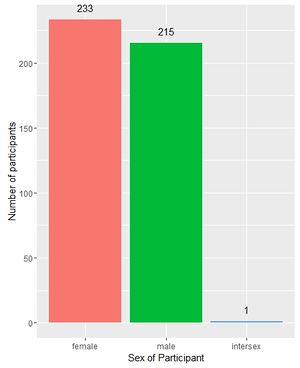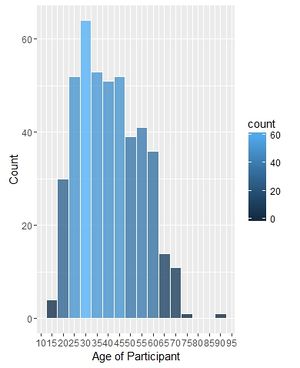Kundalini Profile Survey Analysis
All analysis documented on this page is being done by the Emerging Sciences Foundation's Kundalini Data Insights team. The complete source code for all analysis can be found on the Kundalini Discover project page in GitHub.
To participate in the Kundalini Experimental Project and contribute important research data, please visit the Kundalini Experimental Project page on the ESF website.
Contents
Summary Information
To date, 338 people from all walks of life and from across the globe have participated in the Kundalini Profile Survey.
Age and Sex
There has been broadly an equal participation from men and women, although there were slightly more women who took part. People of all ages have taken part in the survey with the majority of respondants being around the age of 30.
Core Kundalini Indicators Summary
Classical Kundalini awakening indicators were derived from previous surveys and existing literature. Sixty-six (66) "core experience" questions were created to measure the most commonly reported indicators. In the data, these are represented as the mystical, spiritual, and psyphys (psychophysiolocical) question categories.
Mystical indicators are those that typically transcend the normal bounds of human experience. Spiritual indicators are those that, although they may have sublime characteristics, can be easily cognized or imagined. Psychophysiological indicators are those that affect the body and mind through some not yet understood connecting medium.
In general, the data shows a very common occurrence of powerful, transformative experiences among respondents.
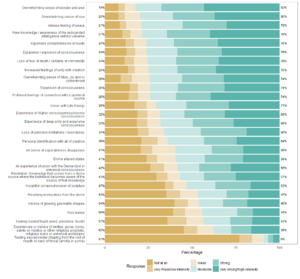 Mystical likert questions summary. Available in PDF: File:Mystical-likert.pdf |
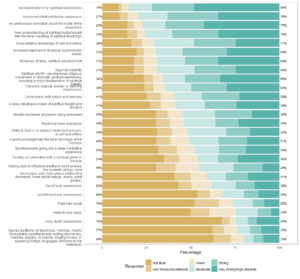 Spiritual likert questions summary. Available in PDF: File:Spiritual-likert.pdf |
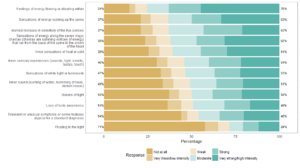 Psychophysiological likert questions summary. Available in PDF: File:Psychophysiological-likert.pdf |
